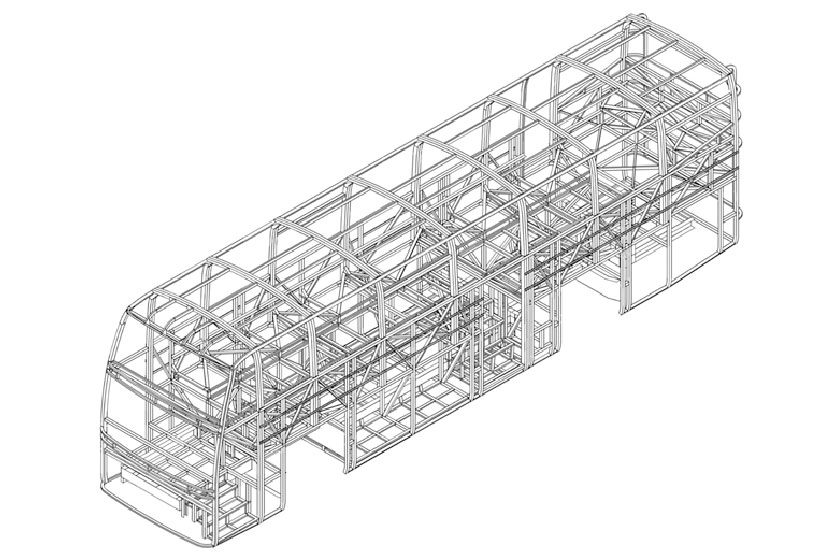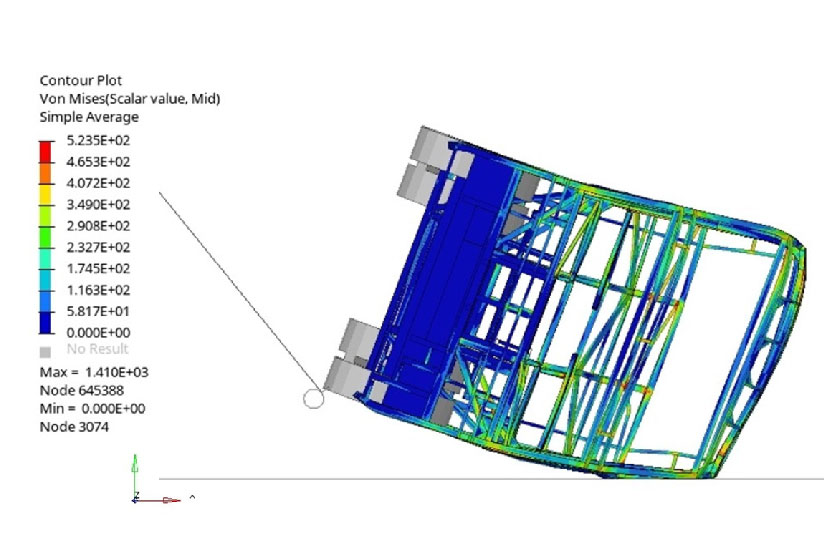Statistically, rollover of passenger bus is generally considered the most severe type of accident in terms of its resulting fatality rate. In a bid to improve the safety standard of passenger bus in Thailand, the Department of Land Transport, the Ministry of Transport, have introduced a rollover strength as part of a requirement on bus approval procedure which will be implemented from 2023 onwards. However, main stumbling blocks are a lack of engineering experience by bus manufacturers to achieve such structural design as well as a limited number of “pass” case in the past. This work was thus initiated by the department of land transport in order to study on a design prospect of bus structure with height exceeding 3.60 m under rollover test conditions according to a European standard, UN R66.
The objective was to obtain an engineering design/ drawing of a bus structure which satisfied a safety standard of UN R66. A Computational-Aided Engineering (CAE) technique was employed as a main tool in this study to simulate a rollover phenomenon for bus structures of interest. A three-dimensional CAD bus model, chosen from selected bus manufacturers, was created before a conversion into a finite element model mainly consisted of shell elements. The main simulation outputs were resulting deformations of structural members for a calculation of a distance between deformed members and a residual space as described in UN R66. Another important part of this prototype was a validation of simulation process used in this work. The validation was done by a comparison to an actual rollover test of a full structure at a testing facility of Department of Land Transport. Once validated, such simulation process was further carried out for a detailed redesign of a sample bus structure until the one which satisfied UN R66 could be obtained.

The chosen design of full bus body had a dimension of 11.84 x 2.48 x 3.76 m (L x W x H) with a structural weight of 3,334 kg as part of 13.77 tons full vehicle without passengers. The main features were a double side-pillar configuration with alternate cross-section arrangement, steel plate reinforcement on side pillars and cant rail connections, reinforce gussets around side pillar and floor joints, and additional members on front and rear mask.
The strength of the chosen design was confirmed by highspeed cameras that no part of any structural components intruded into a residual space during the real rollover test. Furthermore, the design was also developed by taking into account the availability of existing materials in the market, and a manufacturing capability of bus assemblers such as welding workmanship. Therefore, the output of this study could be of definite beneficial to the Department of Land Transport as part of its new regulation regarding an approval of new buses or refurbished ones with a height of 3.60-meter or greater in the near future.
Research team
Dr. Chi-na Benyajati, Dr. Sarawut Lerspalungsanti, Dr. Chadchai Srisurangkul, Jenwit Soparat, Piyapong Premvaranon, Piyamabhorn Uttamung, Apichart Teralapsuwan, Papan Panyavan, Pasayapurin Promprapai, Wuttipong Sritham and Setthaluth Pangkreung

